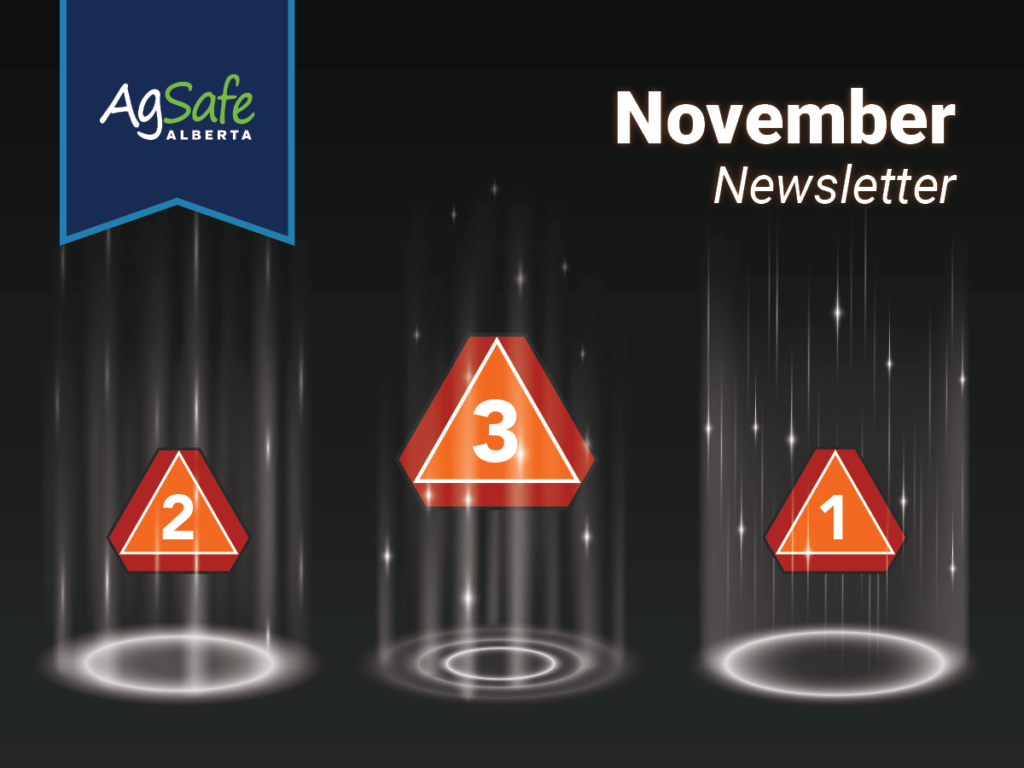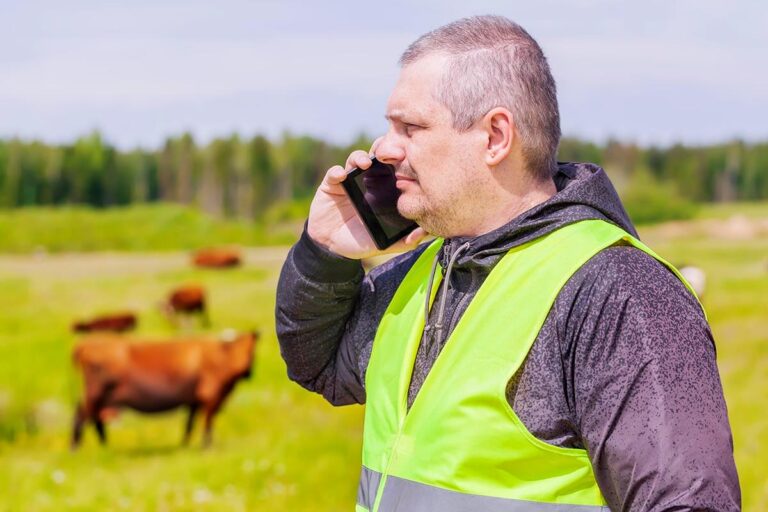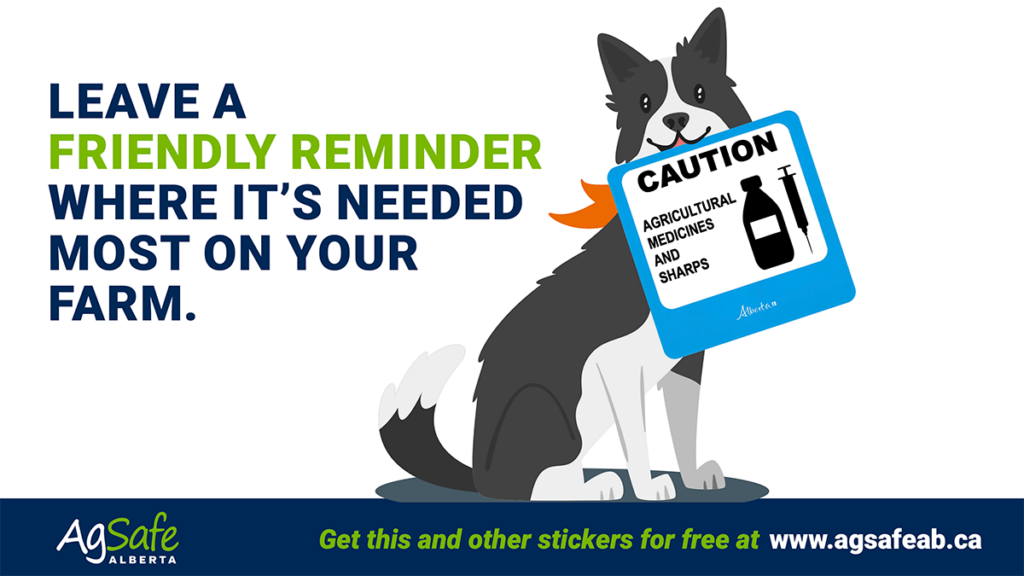
An Interview With One of Us

Last fall, AgSafe Alberta had the pleasure of speaking with Ryan Grier, a farmer, father and someone who understands the importance of safety on his family’s operation. Read what he has to say about farm safety and his experience with the FARMERS CARE program.
Note: This is just part of the interview, stay tuned for more!
Why does safety matter on your farm?
I would say a couple different things. The number one thing is our kids. There are 1,000,001 things that are hazardous on a farm, and being proactive about those things is essential to their safety.
And then there is setting the example. Kids see everything! We are maybe not always the best examples, but we try our best to lead by example so that when they have choices to make regarding safety, they choose the right one.
In terms of other farmers in the industry, where do you think they should start if they’re looking to improve the safety of their operation?
I think most farmers know what they’ve been putting off. It’s just sitting down and making a list of some of the areas that they continually think about and haven’t chosen to move forward with. AgSafe Alberta’s program is an incredible start; some of that has been done for them in terms of (identifying) the main high-hazard areas. I found it a refreshing journey in terms of highlighting some considerations that are a problem on our farm that I may not have even considered.
Medications are one example that comes to mind right away. There was an example of a rancher who had a needle stick injury (and) he ended up dying. That was a holy hell moment for me… it was like, wow, that’s crazy, right? I immediately went out and pulled the whole cupboard apart because (those are) prescribed drugs. Farms and ranches are really good at knowing what drugs are needed and when, but not necessarily how they will impact a human.
We use an app for safety but ended up linking SDS’s to all the drugs and then flagged a couple, like, “Hey, did you know this, and did you know this?” and it was a really good conversation.
What did you learn about your farm by completing FARMERS CARE?
I think the case studies were the biggest hit for me… they brought you to tears at times, but they were the most impactful. Like, “Hey, this happened. We’re not just making this up. Here are some examples of this happening and here was the outcome. (They) immediately make you think “Oh crap, we have that on our farm.”
I’ve been involved in oil and gas and then in the electrical industry for decades, so safety’s always top of mind and there are lots of hazards in both those industries, but there are some in the ag industry that sometimes just need a little bit of (attention).
You can start the FARMERS CARE program by clicking HERE.

Take Your Farm’s Safety to the Next Level with FARMERS CARE Level 3
Did you know that inspections are a practical and effective way to make your farm safer & more efficient?
In FARMERS CARE Level 3 you will learn about basic inspections that will benefit a farm of any size and type. Topics covered will include how to conduct an inspection, fixing issues found during an inspection by taking corrective actions, and the importance of communicating inspection results to your farm team.
Just like the other levels, the information presented here has been kept simple and practical. Whether you operate a family farm or have employees, you will find information in FARMERS CARE Level 3 that you can apply to and benefit from on your operation.
Remember, FARMERS CARE LEVEL 3 IS FREE TO TAKE. To register for and complete FARMERS CARE Level 3, you must have already completed FARMERS CARE Levels 1 & 2 (and received the promo code given to you at the end of each level in order to advance to the next one).
Click here to get started with FARMERS CARE Level 1.
Click here to go to FARMERS CARE Level 2.
Click here to go to FARMERS CARE Level 3.

Hi-Visibility Versus Retro-Reflective: Which One Do You Need?

The days are rapidly growing shorter. More work is getting done in low light and near-dark conditions. So, what do you need on your farm: high-visibility, retro-reflective or a combination of both?
High-visibility workwear is a type of personal protective equipment that allows equipment operators to see others in the work area better in low-light or dark situations. The contrast between the high-visibility clothing and the dark background in combination with movement makes it easier for our eyes to see the wearer.
Retro-reflective workwear is made with a material that returns light in the direction of the light’s source. As long as the person wearing it is standing in the light beams (i.e., headlights), they will be visible.
A combination of both high-visibility and retro-reflective workwear may be suitable for most operations, but in order to identify which is required, a hazard assessment will need to be performed. When performing a hazard assessment, consider the following:
- The work being performed, how it is performed and how many people are involved.
- The work environment, including:
- The background the workers must be seen against (i.e., is it dark or is there other equipment moving around?).
- If the environment may change (e.g., heavy snow or rain may move in, fog, etc.).
- Speed of the work being performed and equipment operated.
- Surface conditions and ability to stop quickly if needed.
- Known or possible distractions.
- Any obstacles that may be present in the work area.
- How long will the worker(s) be exposed to these hazards?
- Current hazard controls in place and any necessary additional hazard controls needed.
Remember, high-visibility and retro-reflective are forms of personal protective equipment. Personal protective equipment is the least effective hazard control measure and should only be used in combination with other, more effective types of hazard control.
To learn more about hazard assessments, as well as hazard identification, elimination and hazard control, download the new AgSafe Alberta FarmSafe Plan Manual.
Safety First, Last Thoughts
Safe Storage & Handling of Agricultural Medicines

The proper storage and handling of agricultural medicines is essential. Not only is it important for human health and safety reasons, but it also helps to ensure that the product remains effective and that meat & milk do not get contaminated.
In order to store and handle agricultural medicines properly, the following steps are recommended:
- Create a product inventory. This is simply a list of the items you use and the amounts that you keep on hand. Record the expiry dates as you do this.
- Read the drug label, veterinary drug label and package insert for product information. This information will go beyond how to use the medication and will cover its hazards, storage and handling precautions as well.
- Think about where and how you currently store these medications. Now consider:
- Can unauthorized individuals, children and/or animals access them?
- Which ones are heat sensitive and should be refrigerated? Are they stored in their own designated fridge away from food products?
- Which ones are sensitive to light and should be stored away from bright light?
- Which ones need to be protected from moisture?
- Determine which ones are being stored correctly and which ones are not.
- Identify and take any necessary corrective actions. This could require the purchase of a mini fridge with a lock or installing a lock on a storage cabinet.
Additional points to remember include the following:
- Always read the labels & inserts before purchasing a product.
- Do not purchase medications in larger quantities than necessary.
- Clean and organize the storage area(s) regularly. This will help to ensure products with older expiry dates get used first and products that have expired are removed from the inventory and disposed of properly.
- Different types of products should be stored on different shelves (for example, antibiotics should be stored on a separate shelf from vaccines or hormones). This helps to reduce the likelihood of someone grabbing the wrong product by mistake. Labelling shelves will support this.
- Anyone working directly with or around agricultural medications will require training in their hazards, recognition of exposures to these products, and how to use and handle them safely, in addition to proper storage and disposal.
For training that will support your farm in this area, AgSafe Alberta has developed a farm-focused WHMIS 2015, Pesticide, Veterinary Drug and Medicated Feed Awareness Course. This course is available online and can be completed on your schedule. To register for and complete this course, click on the link below.
WHMIS 2015, Pesticide, Veterinary Drug and Medicated Feed Awareness Course

CONTACT US
For general inquiries: info@agasafeab.ca /403-219-
For our hotline for incidence assistance: 1-833-9AGSAFE
